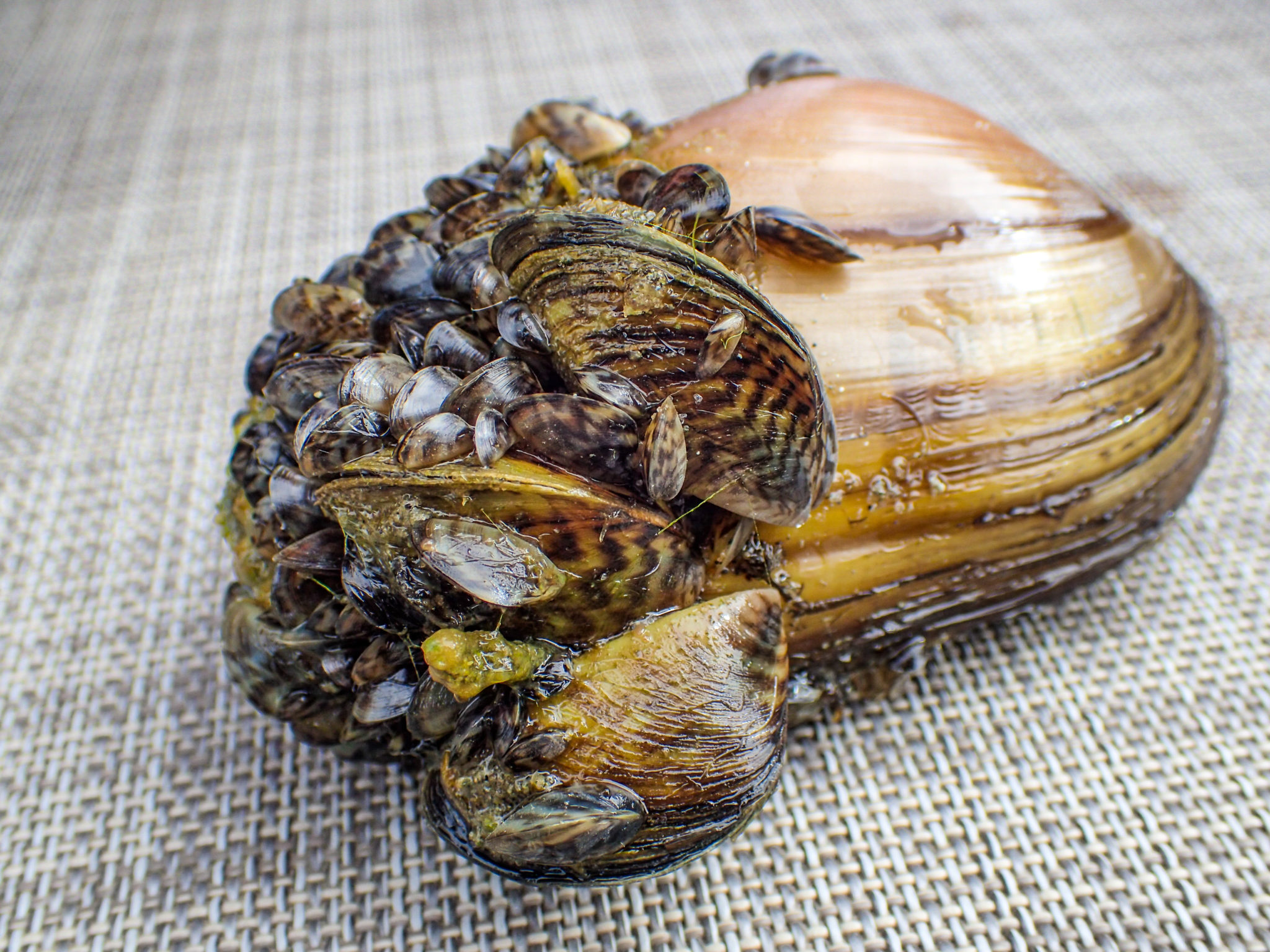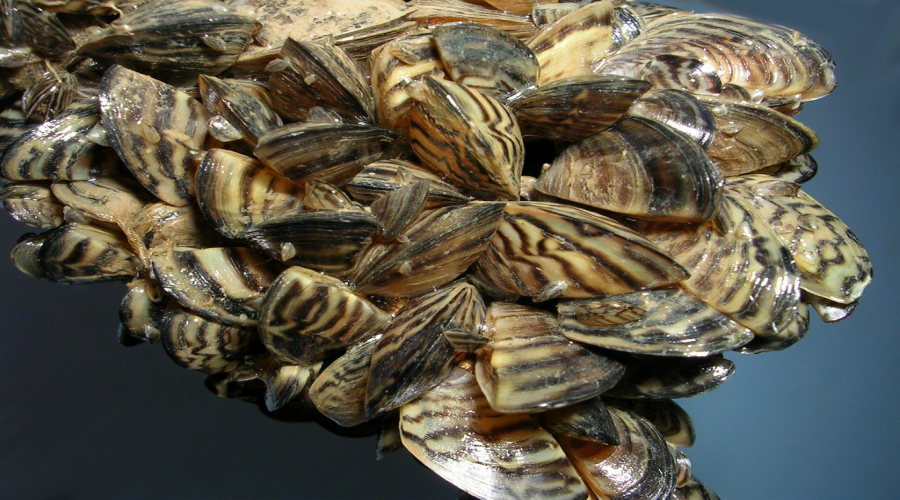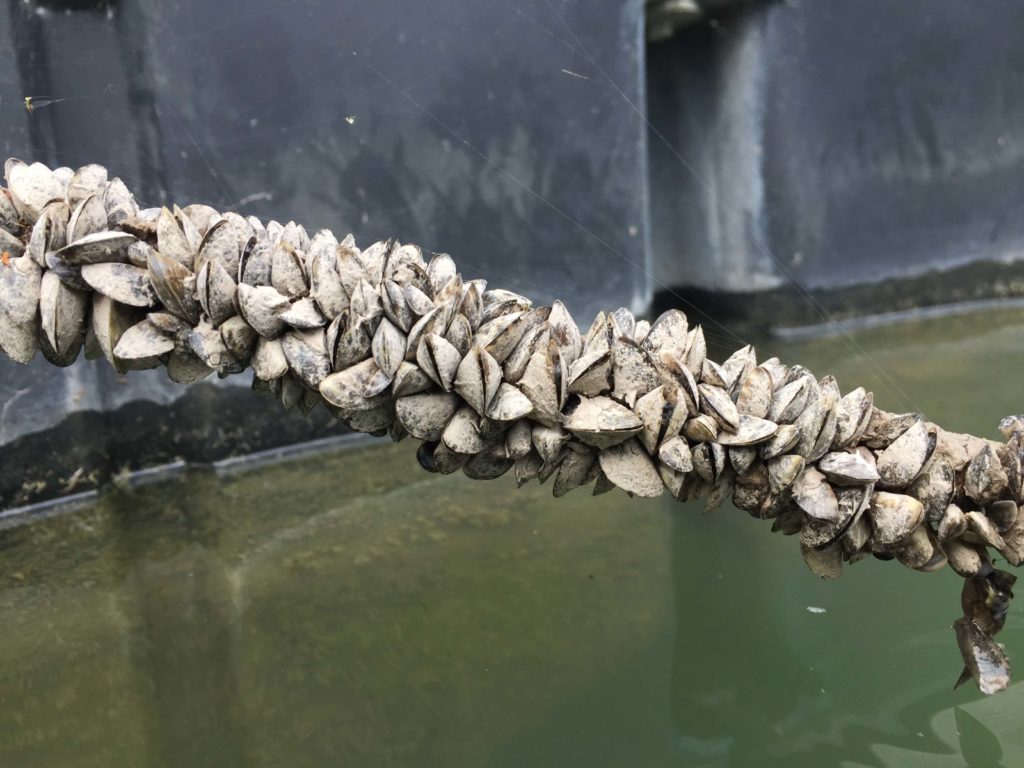

These threads produce powerful glue that anchors the mussel in place. Their ability to attach to hard surfaces results from the tuft of fibers located at the hinge of their shell called byssal threads. Zebra mussels usually grow in clusters and are generally found in shallow (6-30 feet), algae-rich water. On average, zebra mussels live 2-5 years.ĭensities of zebra mussels can reach over 100,000 individuals per square meter.

Once attached it takes approximately one year for the mussel to grow one inch and become sexually mature.

Within 2-3 weeks, the veligers begin to ‘settle-out’ in the water under the weight of their forming shells and attach to firm, underwater surfaces. These veligers are not visible to the naked eye and are about the width of a human hair. These threads are unique to zebra and quagga mussels and are not found on native mussels.įemale zebra mussels can produce up to one million eggs per summer.įertilized eggs develop into free-swimming larvae called veligers. Both species have byssal threads (or ropes) on the hinge edge of their shells that allow them to attach to solid objects. The shell of the quagga mussels is rounder and usually light tan to almost white, with black, cream, or white bands.
Zebra mussels may be confused with their invasive cousin, the quagga mussel ( Dreissena bugensis). The shell is “D” shaped and white or cream-colored with jagged brown or black stripes. Zebra mussels look like small clams, ranging from 1/8 to 2 inches in length. See a progression of the invasion of the mollusk in the United States. This species continues to spread and threaten many lakes and rivers across the United States. Populations are now known from at least 23 states, primarily within the Great Lakes and Mississippi River watersheds. Illinois, Mississippi, Mohawk, Hudson, Susquehanna, Tennessee and Arkansas rivers. Since their arrival, zebra mussels have spread rapidly throughout the Great Lakes and into several major river systems of the eastern United States, including the Ohio. Native to the Caspian Sea region of Asia, zebra mussels reached the Great Lakes in the mid-1980s in the ballast water of a ship. Zebra mussels (Dreissena polymorpha) are among the most devastating aquatic invasive species to invade North American fresh waters. I knelt to take then photo, and when I stood, my knee was bleeding in 3 places.Ĭheck this out background big and in his Lake Michigan slideshow.NOAA, Great Lakes Environmental Research Lab Zebra mussels on a stick Photo by Simon van Mechelen, University of Amsterdam, 1990. Today, the beach is covered in razor sharp zebra mussel shells. This stretch of beach on South Manitou Island was once filled with sugary white sand. They’ve trashed the food chain, spawned all manner of nasty plants & algae and they slice up your feet. That feature on Absolute Michigan goes in depth about who they are and what they do so I won’t go on and on here except to say that as someone who walks the beaches of Lake Michigan often, there’s few things that make me sadder or madder than these little bastards.
#Pictures of zebra mussels series
Today’s villain in our Michigan Invasive Species series are Zebra Mussels & Quagga Mussels. ~Tom Nalepa, Great Lakes Environmental Research Laboratory “In terms of the whole food web, I don’t think there’s any question that zebra and quagga mussels have had the largest impact on the biological communities of the Great Lakes”


 0 kommentar(er)
0 kommentar(er)
